Armide report February 12th 2018
Armide report February 12th 2018
FAIRING BATTENS FOR THE SHEERLINE
Two deep plywood battens have been temporarily clamped either side of the deck on the wooden stanchions in order to finalise the sheer-line. A deep batten is necessary because it is not possible to stand back and see the sheer-line from a distance (because the boat is in a shed surrounded by scaffolding) so the batten is relied on to give a fair line, something that a less wide batten would not be able to do.
The batten, once it is in place, is then used to gauge and fair the line of the new bulwarks from above (plan view) and in profile view (the sheer-line).
Prior to the restoration, the plan view of the deckhad a number of humps and hollows down the length of the yacht’s topsides. This unfairness could not be rectified during re-framing because the hull planking was used as the former for the new frames and the deformations were not large enough to justify removal of large areas of hull planking at the same time.
The unfairness in the topsides was therefore rectified by epoxy gluing sipo strips to the outside faces of the hull planking at and below the deck edge (max thickness 8mm in the least fair area aft but on average 3mm).
In order for the plan view of the ply batten to be a fair line, the wooden stanchions have then in turn had oak added to their outboard faces at the areas where sipo has been added to the topsides. This is so that the bulwark rail will be fair when viewed from above, something that has not been the case fora number of years with Armide.
Likewise, when Armide arrived at Classic Works she was hogged at both sets of chain-plates. This hogging, caused by the tension in the yachts rigging pulling the sides of the yacht upwards over many years, had left permanent bumps of up to about 4 cms in both sides of the sheer-line at the level of the masts’ chain-plates.
This hogging was taken out during the re-framing and re-decking of the yacht and the deep ply batten is now being used for final checks on the heights of all the oak stanchions to ensure that the sheer-line is fair and correct. Once that is done, the teak bulwark rail can be fitted and then the capping rail.
Photos of recent works undertaken
-
![39-04]()
Original steering mechanism and auto pilot alignment checks
-
![39-03]()
Helm station mock up with cardboard model of compass binnacle
-
![39-02]()
Ply battens each side to finalise wooden stanchions and capping rail fairness
-
![39-08]()
Main saloon panelling
-
![39-06]()
Profile view of helm station mock up including plywood wheel and bench seating
-
![39-05]()
Cardboard model of compass binnacle with engine and bow-thruster controls
-
![39-07]()
Main saloon panelling
-
![39-01]()
Ply battens each side to finalise wooden stanchions and capping rail fairness
-
![39-10]()
Lower rudder bearing following welding
-
![39-12]()
Lower rudder bearing following welding
-
![39-11]()
Lower rudder bearing following welding
-
![39-09]()
Doghouse teak joinery
-
![39-13]()
Lower rudder bearing following welding – dry fit prior to rivetting
-
![39-16]()
Doghouse sanding prior to varnishing
-
![39-14]()
Drilling off bronze chain-plate deck plates
-
![39-15]()
Bronze chain-plate deck plates
-
![39-18]()
Wooden stanchion fairing with ply batten
-
![39-17]()
Bobstay installation with two 14mm bronze bolts
-
![39-19]()
Hull fairing aft starboard
-
![39-20]()
The propeller – initial installation checks.
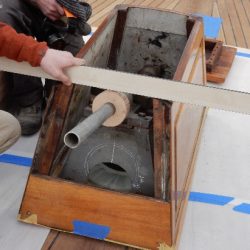

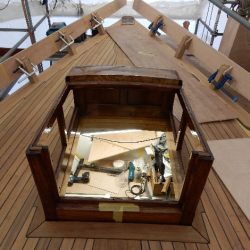
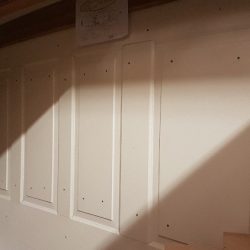
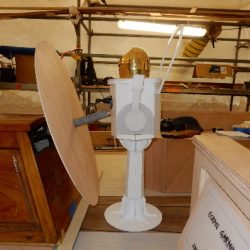
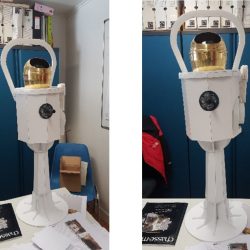
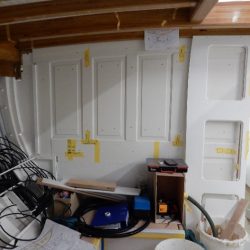
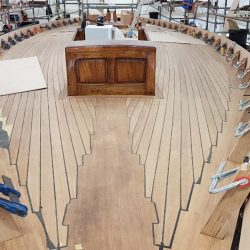
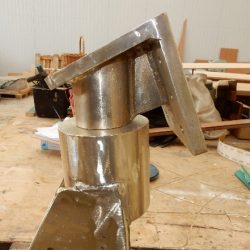
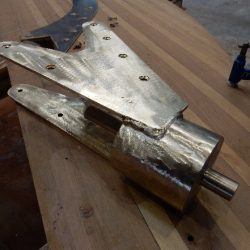

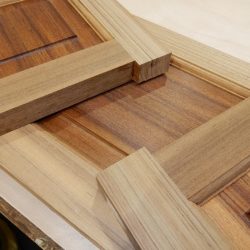

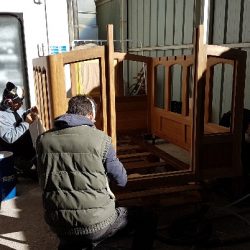
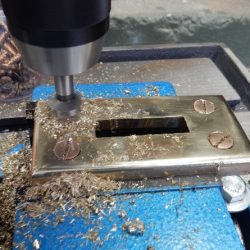
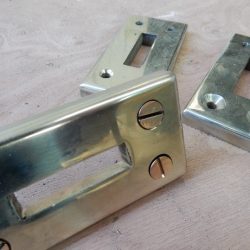
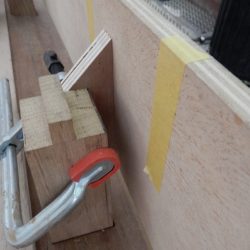
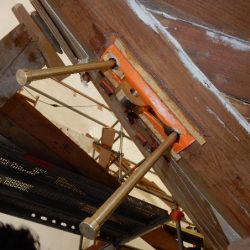
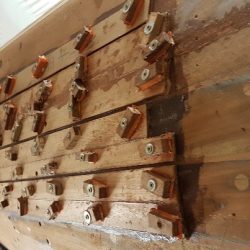
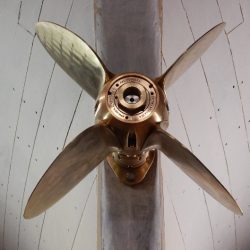
Leave a Reply
You must be logged in to post a comment.